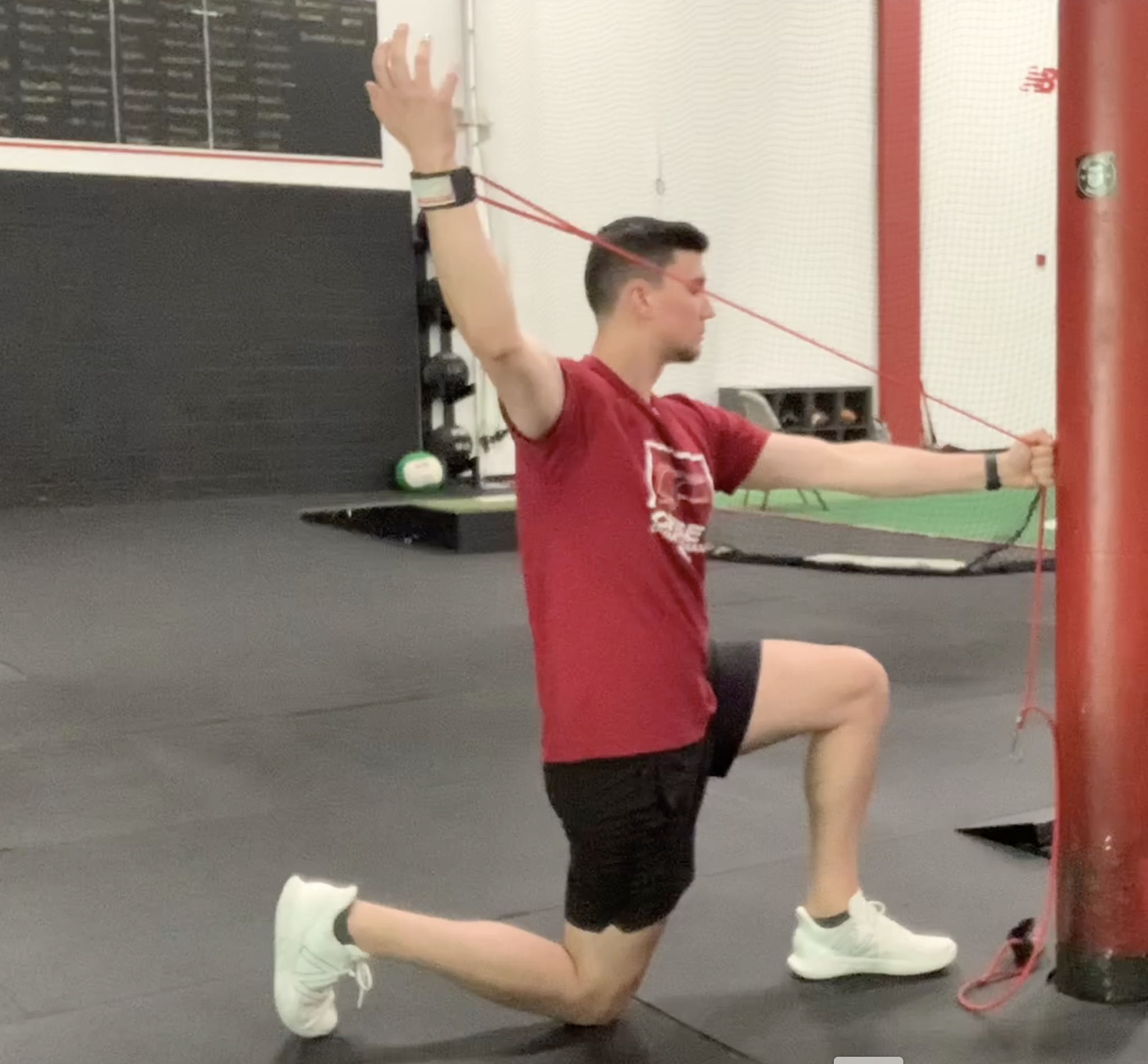
Exercise of the Week: Half-Kneeling Wall-Press 1-Arm J-Band Trap Raise
Today’s guest post comes from Cressey Sports Performance – MA coach, Ethan Dyer.
The Half-Kneeling Wall-Press 1-Arm J-Band Trap Raise is a new variation we’ve been using a lot with our more hypermobile (loose jointed) and/or younger athletes here at CSP. We get the same value as a traditional J-Band trap raise, but with a small tweak that can be a huge difference maker for certain athletes.
Important Coaching Cues:
Make sure we nail our half-kneeling position. Any postural issues down the chain will create interference up the chain. Undue lumbar extension and/or “hip hike” on one side needs to be taken care of before we can worry about the rest of the exercise.
Our wall press needs to be aggressive enough to make a difference. This is what separates this exercise from a standard J-Band trap raise or “Y.” By actively reaching with our off hand, we push our rib cage back – allowing for better scapulothoracic (shoulder blade on rib cage) congruency and ideally more effective retraction/upward rotation. Reaching against a hard surface gives us even more stability in that position, and this is particularly useful for our looser, floppier guys (you know who you are).
As we perform the trap raise we need to be careful not to lose our initial posture. If we allow compensatory movement in the lower extremity or the torso, we are no longer isolating the desirable posterior tilt and upward rotation and end up performing what is essentially a full-body exercise.
To progress this, stand the athlete up (short-split or split-stance). Removing the wall will make this more difficult but may dramatically change the stimulus depending on the athlete.
We love the J-Band “Junior” resistance for this exercise; the traditional resistance J-Bands will bury a lot of people here. As with other J-Band drills, we get a lot of value without asking our athletes to grip anything (think high throwing volume or return-to-throw).
This variation is probably most useful in the 8 to 12 rep range, with a varying number of sets depending on its location in a program (part of a warm-up or movement day, or accessory work during a lift).
About the Author
Ethan Dyer serves as a Strength & Conditioning coach at Cressey Sports Performance. He started as a client at CSP and eventually went on to intern at CSP-MA. Following another internship at Indianapolis Fitness and Sports Training, Ethan joined the CSP-MA team. He was a pitcher at the College of the Holy Cross before transferring to Endicott College to complete his undergraduate work with a major in Exercise Science and minor in Psychology. A Certified Strength and Conditioning Coach through the National Strength and Conditioning Association, Ethan has been a volunteer with both the Miracle League and Special Olympics, and has a passion for working with young athletes to help them fall in love with training while avoiding injury. You can follow him on Instagram at @Ethan___Dyer.


